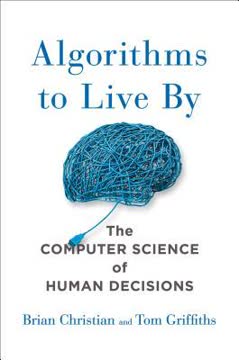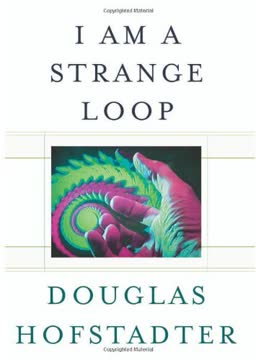Key Takeaways
1. Analogy is the core of cognition
Analogy-making, far from being merely an occasional mental sport, is the very lifeblood of cognition, permeating it at all levels, ranging all the way from mundane perceptions ("That is a table") to subtle artistic insights and abstract scientific discoveries (such as general relativity).
The foundation of thought. Analogy-making is not just a specialized cognitive skill, but the fundamental process underlying all human thinking. It allows us to understand new situations by relating them to familiar experiences, enabling us to navigate the complexities of our environment. This process is continuous and largely unconscious, occurring countless times per second in our minds.
From simple to complex. Analogical thinking spans a vast spectrum of cognitive activities:
- Basic object recognition (e.g., identifying a chair)
- Language comprehension and production
- Problem-solving in everyday situations
- Scientific theorizing and discovery
- Artistic creation and appreciation
By recognizing patterns and similarities across different domains, we can transfer knowledge and make inferences that help us comprehend and interact with the world around us.
2. Categories are created and extended through analogies
Every concept in our mind owes its existence to a long succession of analogies made unconsciously over many years, initially giving birth to the concept and continuing to enrich it over the course of our lifetime.
Dynamic concept formation. Categories in our minds are not static, predefined structures but evolve continuously through analogical processes. This dynamic nature allows our conceptual framework to adapt to new experiences and information.
Key aspects of category formation and extension:
- Initial creation: Categories often start with a single, concrete example
- Expansion: New experiences are compared to existing categories, leading to their extension or modification
- Abstraction: As categories grow, they become more abstract and flexible
- Subcategories: Complex categories may develop subcategories to accommodate diverse members
The process is illustrated by the development of concepts like "mother," which evolves from a child's specific experience with their own mother to a complex, multifaceted category encompassing biological, adoptive, and even metaphorical uses of the term.
3. Words and phrases are labels for complex mental categories
Just as we are happy not to see people's veins, intestines, brains, and other internal organs, so we don't want to be constantly reminded of all the infinite details inside the things we deal with on a daily basis. We want our eyes to be closed so that we can see better.
Linguistic efficiency. Words and phrases serve as efficient labels for complex mental categories, allowing us to communicate and think about intricate concepts without constantly grappling with their underlying complexity. This efficiency is crucial for effective communication and cognitive processing.
Examples of linguistic labels for complex categories:
- Single words: "chair," "love," "democracy"
- Compound words: "airport," "bottlecap"
- Idiomatic expressions: "to spill the beans," "once bitten, twice shy"
- Proverbs: "The early bird catches the worm"
These labels encapsulate rich networks of associations, experiences, and knowledge, enabling us to access and manipulate complex ideas with ease. The opacity of these labels, much like the way we don't see the internal workings of our bodies, allows us to focus on higher-level thinking and communication without being bogged down by unnecessary details.
4. Non-lexicalized categories shape our understanding
To be sure, we don't want to suggest that an event has just one abstract structure. Speaking, a posteriori, of "the" abstract structure of an event gives the impression that there was and is only one correct way to perceive it and to have a memory of it get triggered, which is not the case; any of various distinct conceptual skeletons might get attached to a given situation, depending on the frame of mind one is in when it is encountered.
Flexible mental structures. Non-lexicalized categories, those without specific linguistic labels, play a crucial role in shaping our understanding of the world. These categories are often more fluid and context-dependent than their lexicalized counterparts, allowing for greater flexibility in interpreting and remembering experiences.
Characteristics of non-lexicalized categories:
- Adaptability: Can be modified based on new experiences or perspectives
- Context-sensitivity: Their activation depends on the current situation or frame of mind
- Personal nature: Often unique to an individual's experiences and thought patterns
- Potential for lexicalization: Some may eventually gain linguistic labels if widely shared
Examples of non-lexicalized categories include personal memories that share a common emotional or situational theme, or ad-hoc categories created for specific purposes (e.g., "things to save from a burning house"). These categories demonstrate the rich, multifaceted nature of human cognition beyond the constraints of language.
5. Emotions play a crucial role in memory and analogy
In sum, several emotions — an initial fascination, the pleasant surprise of a simple visual analogy, the high hopes that ensue from this discovery, and finally a sudden deflation — all play critical roles in this reminding. This illustrates a general tendency — namely, that remindings that take place at a deep level are often dependent on emotional aspects of the two episodes they link together.
Emotional anchors. Emotions serve as powerful anchors for our memories and play a significant role in the formation and retrieval of analogies. The emotional content of an experience often determines its memorability and influences the likelihood of it being recalled in future situations.
Key aspects of emotion in memory and analogy:
- Encoding: Emotional experiences are often encoded more deeply in memory
- Retrieval: Similar emotional states can trigger the recall of past experiences
- Analogy formation: Emotional resonance between situations can lead to analogical connections
- Meaning-making: Emotions help assign significance to experiences, influencing how they are categorized and connected to other memories
This emotional component of cognition explains why seemingly unrelated events can be strongly linked in our minds if they share a similar emotional signature, even if their surface details are vastly different.
6. Encoding experiences involves distillation, not rote recording
The problem is not that it's hard to perceive a deep and precise conceptual skeleton, for in fact we all perceive such skeletons all the time, when the categories involved are those of our day-in-day-out thinking — that is, categories with which we have some degree of expertise. The problem is that when the categories are unfamiliar to us, we cannot see nearly as deeply into situations involving them.
Selective abstraction. When we encode experiences into memory, we don't simply record every detail like a video camera. Instead, we engage in a process of selective abstraction, distilling the essence of the experience based on our existing knowledge and the perceived relevance of different aspects.
Key features of the encoding process:
- Selective attention: Focus on salient or meaningful aspects of the experience
- Abstraction: Extraction of general patterns or principles from specific details
- Integration: Connecting new information with existing knowledge structures
- Expertise-dependent: The depth and quality of encoding depend on our familiarity with the domain
This process of distillation allows for more efficient storage and retrieval of information, as well as the ability to apply past experiences to new situations through analogy. However, it also means that our memories are not perfect recordings of events, but rather reconstructions based on the conceptual skeletons we've extracted.
7. Animal cognition relies on analogical thinking
To be sure, we don't want to suggest that an event has just one abstract structure. Speaking, a posteriori, of "the" abstract structure of an event gives the impression that there was and is only one correct way to perceive it and to have a memory of it get triggered, which is not the case; any of various distinct conceptual skeletons might get attached to a given situation, depending on the frame of mind one is in when it is encountered.
Non-verbal analogies. Animal cognition, like human cognition, relies heavily on analogical thinking. Without the benefit of language, animals must make sense of their environment by drawing connections between current situations and past experiences.
Examples of analogical thinking in animals:
- A dog recognizing different types of balls as playable objects
- A chimpanzee using a stick as a tool, applying knowledge from one context to another
- Birds adapting their nesting behaviors to new environments
This analogical process in animals demonstrates that the fundamental cognitive mechanisms of categorization and analogy-making are not dependent on language. Instead, they are rooted in the basic need to understand and navigate the world effectively, a need shared by humans and animals alike.
8. Fauxthenticity: The illusion of authenticity in modern marketing
Below we list some cases where marketing trickery can give rise to a false impression that tempts customers to buy without realizing what lies beneath the surface. Naïve would-be buyers, convinced that they have hit on genuine authenticity, fall for slick mass-produced articles — a successful ploy resulting from cold calculations in the business office.
Manufactured authenticity. "Fauxthenticity" refers to the marketing strategy of creating an illusion of authenticity for mass-produced goods or experiences. This concept highlights the tension between consumer desire for genuine, unique products and the economic realities of mass production.
Examples of fauxthenticity:
- "Hand-painted" figurines mass-produced in factories
- Local craft markets selling imported, mass-produced items
- Automated emails using casual language to simulate personal communication
- Restaurant chains designed to look like independent local establishments
The prevalence of fauxthenticity demonstrates the power of analogical thinking in marketing: by creating superficial similarities to truly authentic experiences, marketers can trigger positive associations in consumers' minds. This phenomenon also illustrates how our categorization processes can be manipulated, as we may incorrectly assign mass-produced items to categories associated with authenticity and uniqueness.
Last updated:
FAQ
What's Surfaces and Essences: Analogy as the Fuel and Fire of Thinking about?
- Core Thesis: The book argues that analogy is the fundamental mechanism of human thought, shaping how we form concepts and understand the world.
- Role of Analogy: It explores how analogies are not just linguistic tools but are central to cognition, influencing how we categorize and interpret experiences.
- Interconnected Concepts: Hofstadter illustrates how analogies connect various domains, such as language, science, and everyday life, to enhance our understanding.
Why should I read Surfaces and Essences?
- Insight into Cognition: The book offers a deep dive into how analogies shape human thought, challenging traditional views of cognition.
- Interdisciplinary Appeal: It connects ideas from psychology, linguistics, and philosophy, making it relevant for a wide audience interested in cognitive science.
- Engaging Examples: Hofstadter uses relatable anecdotes and examples to make complex concepts accessible and enjoyable to read.
What are the key takeaways of Surfaces and Essences?
- Analogy's Central Role: The book posits that analogy is at the heart of all thinking, influencing how we categorize and understand the world.
- Conceptual Fluidity: Concepts are dynamic and evolve through experiences, rather than being fixed definitions, allowing for a richer understanding of language and thought.
- Cognitive Flexibility: It emphasizes the importance of cognitive flexibility, showing how we can shift between categories and perspectives effortlessly.
What are the best quotes from Surfaces and Essences and what do they mean?
- "Analogy is the fuel and fire of thinking.": This quote encapsulates the book's main thesis, emphasizing that analogy is essential for forming concepts and understanding the world.
- "Categories are not drawers into which clear-cut items are automatically sorted.": This highlights the complexity of categorization, suggesting that our mental categories are fluid and influenced by context and experience.
- "The essence of genius is the ability to see connections where others see none.": This reflects the idea that creative thinking involves recognizing relationships between seemingly unrelated concepts.
How do the authors define analogy in Surfaces and Essences?
- Cognitive Process: Analogy is defined as a cognitive process that connects different concepts based on perceived similarities, fundamental to how we think and categorize experiences.
- Relational Mapping: It involves mapping relationships from one domain to another, allowing for deeper insights and understanding.
- Everyday Examples: The authors provide examples of how we use analogy in daily life, illustrating its deep integration into our cognitive processes.
How does Surfaces and Essences relate to artificial intelligence?
- Human vs. Machine Cognition: Hofstadter discusses the limitations of AI in recognizing and understanding analogies, highlighting the unique aspects of human thought.
- Challenges in AI: Current AI systems struggle with tasks requiring deep understanding and analogy-making, which are natural for humans.
- Future Implications: While AI may evolve, Hofstadter emphasizes that human-like understanding remains a distant goal, underscoring the complexity of human cognition.
What role does language play in Surfaces and Essences?
- Language as a Tool: Language is portrayed as crucial for expressing and communicating concepts formed through analogy, shaping how we categorize experiences.
- Cultural Variability: Different languages may categorize concepts differently, affecting how speakers perceive the world, highlighting the interplay between language and thought.
- Idiomatic Expressions: The book discusses idiomatic expressions as examples of how language encapsulates complex categories, often relying on analogies.
How do the authors address the limitations of traditional views on categorization in Surfaces and Essences?
- Critique of Rigid Definitions: The authors critique the classical view that categories have precise definitions and boundaries, arguing for a more fluid understanding.
- Emphasis on Context: They stress that context plays a significant role in how we categorize experiences, leading to a more nuanced understanding.
- Dynamic Nature of Concepts: Concepts are presented as dynamic entities that evolve over time through experiences and analogies, encouraging a reconsideration of fixed categories.
How does Hofstadter illustrate the concept of abstraction in Surfaces and Essences?
- Levels of Abstraction: Categories can exist at different levels of abstraction, with broader categories encompassing narrower ones.
- Examples of Abstraction: Hofstadter uses examples like "coffee" to show how its meaning can shift based on context, illustrating the fluidity of categorization.
- Cognitive Adaptation: Navigating these levels of abstraction is a key aspect of human cognition, allowing for adaptability in thought and language.
What is the significance of categories in Surfaces and Essences?
- Mental Structures: Categories help organize and make sense of experiences, formed through a series of analogies and evolving over time.
- Fluid Boundaries: Categories have fluid boundaries, allowing for flexibility in understanding and interpretation.
- Cultural Influence: Categories are influenced by cultural context, meaning different cultures may categorize experiences differently, highlighting the subjective nature of categorization.
How do the authors connect analogy and categorization in Surfaces and Essences?
- Interconnected Processes: Analogy and categorization are two sides of the same cognitive coin, essential for understanding and interpreting experiences.
- Fluidity of Concepts: Concepts evolve through a continuous process of analogy-making and categorization, highlighting the dynamic nature of human thought.
- Practical Implications: Understanding this relationship can enhance cognitive flexibility and creativity, encouraging readers to apply these insights in their own thinking.
How does Surfaces and Essences relate to education and learning?
- Role of Analogies in Learning: Analogies are crucial for understanding new concepts, helping students relate unfamiliar ideas to familiar ones.
- Persistence of Naïve Analogies: Naïve analogies often persist into adulthood, influencing understanding of complex subjects, potentially leading to misconceptions.
- Teaching Strategies: Educators should be aware of the analogies students use and work to refine their understanding, enhancing teaching effectiveness and promoting deeper learning.
Review Summary
Surfaces and Essences: Analogy as the Fuel and Fire of Thinking receives mixed reviews. Some praise its insightful exploration of analogy in human cognition, while others criticize its length and repetitiveness. Readers appreciate the book's examination of language, categorization, and scientific thinking, particularly the chapter on Einstein's thought processes. However, many find the writing style tedious and the examples excessive. Some reviewers suggest the book could have been more concise while still conveying its core ideas about the role of analogy in human thought and intelligence.
Similar Books









Download PDF
Download EPUB
.epub digital book format is ideal for reading ebooks on phones, tablets, and e-readers.







